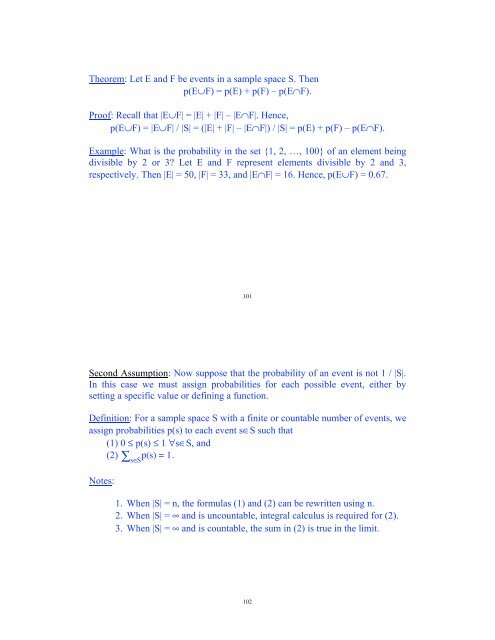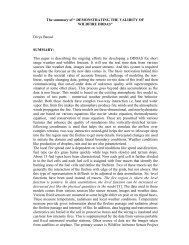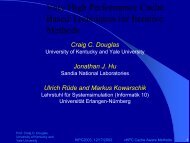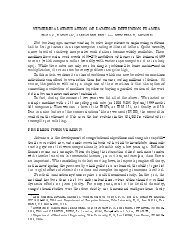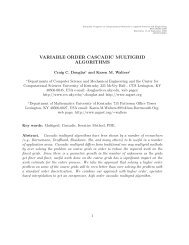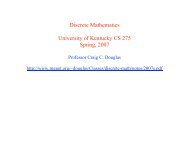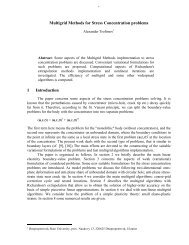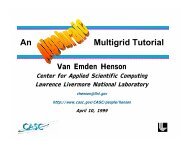Discrete Mathematics University of Kentucky CS 275 Spring ... - MGNet
Discrete Mathematics University of Kentucky CS 275 Spring ... - MGNet
Discrete Mathematics University of Kentucky CS 275 Spring ... - MGNet
You also want an ePaper? Increase the reach of your titles
YUMPU automatically turns print PDFs into web optimized ePapers that Google loves.
Theorem: Let E and F be events in a sample space S. Then<br />
p(E2F) = p(E) + p(F) – p(E3F).<br />
Pro<strong>of</strong>: Recall that |E2F| = |E| + |F| – |E3F|. Hence,<br />
p(E2F) = |E2F| / |S| = (|E| + |F| – |E3F|) / |S| = p(E) + p(F) – p(E3F).<br />
Example: What is the probability in the set {1, 2, …, 100} <strong>of</strong> an element being<br />
divisible by 2 or 3? Let E and F represent elements divisible by 2 and 3,<br />
respectively. Then |E| = 50, |F| = 33, and |E3F| = 16. Hence, p(E2F) = 0.67.<br />
101<br />
Second Assumption: Now suppose that the probability <strong>of</strong> an event is not 1 / |S|.<br />
In this case we must assign probabilities for each possible event, either by<br />
setting a specific value or defining a function.<br />
Definition: For a sample space S with a finite or countable number <strong>of</strong> events, we<br />
assign probabilities p(s) to each event s,S such that<br />
(1) 0 ; p(s) ; 1 (s,S, and<br />
(2) " p(s) = 1.<br />
s!S<br />
Notes:<br />
1. When |S| = n, the formulas (1) and (2) can be rewritten using n.<br />
2. When |S| = . and is uncountable, integral calculus is required for (2).<br />
3. When |S| = . and is countable, the sum in (2) is true in the limit.<br />
102


